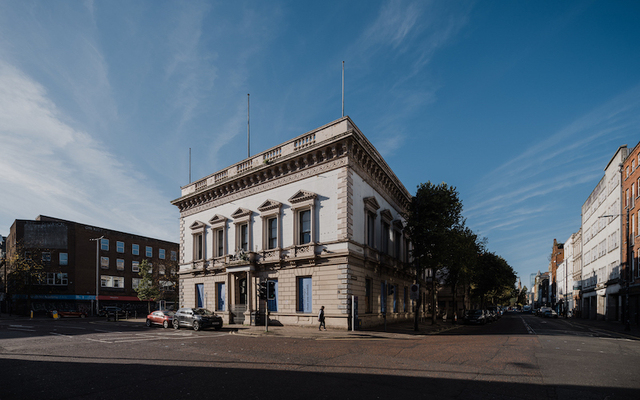Belfast's Assembly Rooms has been added to a list of the world's most at-risk heritage sites.
On January 15, the World Monuments Fund (WMF) announced the 25 cultural heritage sites on its 2025 World Monuments Watch, which spotlights locations "of extraordinary significance facing urgent challenges, among which conflict, natural disaster, climate change and tourism."
The Assembly Rooms, which is in need of "substantial conservation," was named on the list.
Belfast's Assembly Rooms
Built in 1769, the Assembly Rooms served as a gathering place for political discourse, business, and entertainment in Northern Ireland’s largest city.
Over its history, it hosted significant events, including the 1786 defeat of a proposal to establish a Belfast- based company trading in enslaved Africans and the celebrated 1792 harp assembly.

The building, which is located on the corner of North Street and Waring Street, was converted into a branch of the Belfast Banking Company in 1845.
The bank left the site in 2000 and since then, the building has only been used occasionally for cultural events, such as concerts and art shows.
Local advocates propose to transform the Assembly Rooms into the Museum of the Troubles and Peace, hoping to reclaim the building's role as a space for dialogue, reflection, and learning, while honoring Belfast’s history and fostering reconciliation.

2025 World Monuments Watch
With more than 700 projects in 112 countries worldwide, WMF is the global leader in heritage preservation. In 1996, WMF launched the World Monuments Watch, a biennial, nomination- based program, to mobilize action, build public awareness, and demonstrate how heritage can help communities confront the crucial issues of our time.
“The Watch underscores World Monuments Fund’s commitment to ensuring that heritage preservation not only honors the past but actively contributes to building a more sustainable, inclusive, and resilient future for communities around the world and beyond,” said President and CEO, Bénédicte de Montlaur.
This year’s Watch includes a wide variety of cultural heritage sites facing major challenges, such as Gaza’s Historic Urban Fabric; Ukraine’s Teacher’s House in Kyiv; Africa’s Swahili Coast; the Old City of Antakya, Türkiye; and Chapel of the Sorbonne, France. The 25 sites represent 29 countries across five continents and the Moon.
“For the first time, the Moon is included on the Watch to reflect the urgent need to recognize and preserve the artifacts that testify to humanity’s first steps beyond Earth—a defining moment in our shared history,” stated de Montlaur.
He added: "The inclusion of the Moon underscores the universal need for proactive and cooperative strategies to protect heritage— whether on Earth or beyond—that reflect and safeguard our collective narrative.”
What's Next
Over the next two years, WMF’s global team will work with the 2025 Watch sites to evaluate local needs and co-design strategies for advocacy, preservation, and fundraising. As funds are raised, WMF will also support its local partners in developing a preservation project at the site, which can include targeted advocacy campaigns, planning, research, education, and physical conservation.
The full list can be viewed here.




Comments